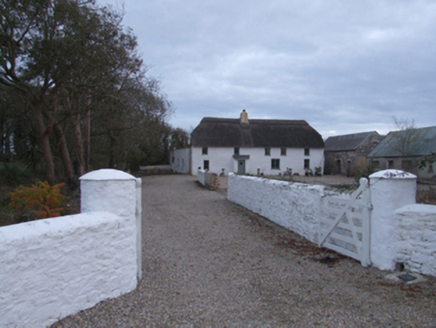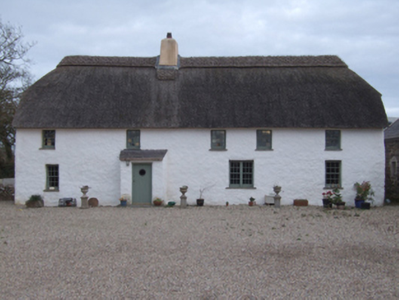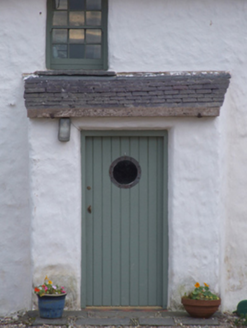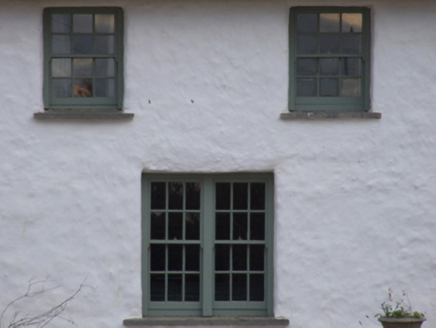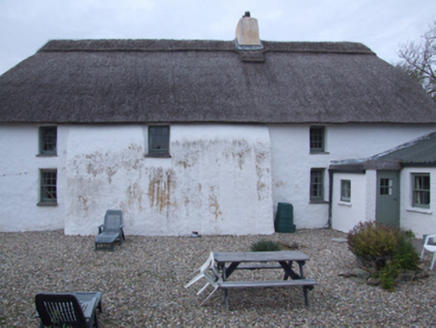Survey Data
Reg No
15704646
Rating
Regional
Categories of Special Interest
Architectural, Social
Original Use
Farm house
In Use As
Farm house
Date
1700 - 1840
Coordinates
294626, 108026
Date Recorded
17/10/2007
Date Updated
--/--/--
Description
Detached four-bay single-storey lobby entry thatched farmhouse with half-dormer attic, extant 1840, on a rectangular plan off-centred on single-bay single-storey lean-to windbreak; three-bay full-height rear (east) elevation. "Restored", ----. Replacement hipped gabled water reed thatch roof with chicken wire-covered exposed hazel lattice stretchers to raised ridge having exposed scallops, rendered battered off-central chimney stack having rendered rounded capping supporting crested terracotta pots, and blind stretchers to eaves having blind scallops. Limewashed rendered battered walls with limewashed rendered battered buttress to rear (east) elevation. Square-headed off-central door opening with concealed dressings framing replacement glazed timber boarded or tongue-and-groove timber panelled door. Square-headed window openings with shallow sills, and concealed dressings framing six-over-six timber sash windows. Square-headed window openings to rear (east) elevation with shallow sills, and concealed dressings framing six-over-six timber sash (ground floor) or timber casement (half-dormer attic) windows. Set in landscaped grounds with limewashed cylindrical piers to perimeter having shallow domed capping supporting timber double gates.
Appraisal
A farmhouse identified as an integral component of the vernacular heritage of south County Wexford by such attributes as the rectilinear lobby entry plan form off-centred on a characteristic windbreak; the construction in unrefined local materials displaying a battered silhouette with sections of "daub" or mud suggested by a stabilising buttress; the disproportionate bias of solid to void in the massing compounded by the diminishing in scale of the openings on each floor producing a graduated visual impression; and the high pitched roof latterly showing a non-indigenous Turkish reed thatch finish. Having been successfully "restored" following a prolonged period of unoccupancy in the late twentieth century, the elementary form and massing survive intact together with quantities of the original or sympathetically replicated fabric, thus upholding much of the character or integrity of the composition. Furthermore, adjacent outbuildings (extant 1840) continue to contribute positively to the group and setting values of a neat self-contained ensemble making a pleasing visual statement in a rural street scene.
